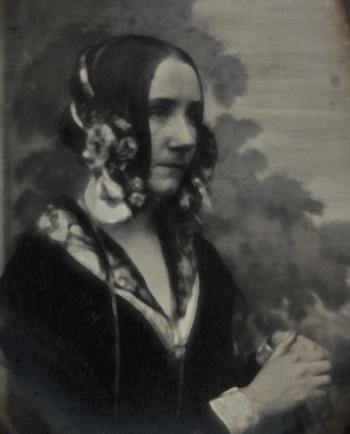The mathematics of Ada Lovelace
 Since the 1970s, much has been written about Augusta Ada King, Countess of Lovelace (1815–1852), allegedly the world's first computer programmer. Popular accounts of her life and work have tended to fall into one of two extremes: either she was a genius who foresaw the computer age, or she was a fraud whose contributions have been enormously inflated. Neither camp, however, has had much to say about the mathematical details of her writings or of her early education, and so in 2015, to coincide with Lovelace's 200th birthday, a project led by Ursula Martin set out to examine Lovelace's mathematical papers, on deposit in the Bodleian Library as part of the Lovelace–Byron archive. This project, in which Christopher Hollings and Adrian Rice also collaborated, revealed a fascinating picture of Lovelace as a determined mathematical learner.
Since the 1970s, much has been written about Augusta Ada King, Countess of Lovelace (1815–1852), allegedly the world's first computer programmer. Popular accounts of her life and work have tended to fall into one of two extremes: either she was a genius who foresaw the computer age, or she was a fraud whose contributions have been enormously inflated. Neither camp, however, has had much to say about the mathematical details of her writings or of her early education, and so in 2015, to coincide with Lovelace's 200th birthday, a project led by Ursula Martin set out to examine Lovelace's mathematical papers, on deposit in the Bodleian Library as part of the Lovelace–Byron archive. This project, in which Christopher Hollings and Adrian Rice also collaborated, revealed a fascinating picture of Lovelace as a determined mathematical learner.
The main source for the study of Lovelace's mathematics as a correspondence course that she took with the mathematician Augustus De Morgan (1806–1871) on material that he would also have been teaching to his UCL mathematics students at that time. This corresopondence has been digitised, and is available alongside transcriptions on the website of the Clay Mathematics Institute, which sponsored part of this work.
An account of Lovelace's mathematical education may be found in the academic papers 'The early mathematical education of Ada Lovelace' and 'The Lovelace–De Morgan Mathematical Correspondence: A Critical Re-Appraisal' by Hollings, Martin, and Rice, who also wrote an account for the general reader, Ada Lovelace: The Making of a Computer Scientist – the first full account of Lovelace's mathematics.
Ada Lovelace, the Making of a Computer Scientist is pubished in April 2018, by Bodleian Library Publishing in collaboration with the Clay Mathematics Institute. It is the first popular account of the scientific and mathematical education of Ada Lovelace, often considered the world’s first computer programmer, illustrated with key images from the Bodleian archives. The work is based on new research whcih shows that Lovelace was a gifted, perceptive and knowledgeable mathematician.
- Hollings, Christopher, Martin, Ursula and Rice, Adrian 2017 The early mathematical education of Ada Lovelace BSHM Bulletin: Journal of the British Society for the History of Mathematics 32, 221-234 provides an overview in historical context.
- Hollings, Christopher, Martin, Ursula and Rice, Adrian 2017 The Lovelace–De Morgan mathematical correspondence: A critical re-appraisal Historia Mathematica 44, 202-231 investigates Lovelace's university level "correspondence course" with Augustus De Morgan
- Popular accounts have appeared in London Review of Books, BBC Oxford, EPSRC Blog, EDGE 2017 questions, London Mathematical Society Newsletter, Mathematics Today magazine, CORE magazine (Computer History Museum)
Oxford's Ada Lovelace bicentenary celebrations, included collaborations with the Bodleian Library, BBC and various science museums. The highlight was an exhibition running for 4 years in a display at the Silicon Valley Computer History Museum, alongside the digitisation of Ada Lovelace's mathematics, with the support of the Clay Mathematics Institute. Numerous presentations included lectures at the Oxford Litfest, Hay Festival, Edinburgh Book Festival, and Gresham College, as well as popular and schools talks.

